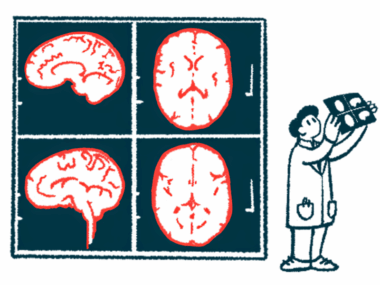Early High-efficacy DMTs Linked to Better RRMS Outcomes in Sweden
Written by |

People with relapsing-remitting multiple sclerosis (RRMS) in Sweden have lower rates of worsening disability than those who live in Denmark, likely due to differences in treatment strategies in each country, according to a new study.
“This study shows that, for the first time to our knowledge, differences in national treatment recommendations and strategies had a significant association with disability outcomes after a few years of follow-up,” the researchers wrote.
The study, “Treatment Escalation vs Immediate Initiation of Highly Effective Treatment for Patients With Relapsing-Remitting Multiple Sclerosis,” was published in JAMA Neurology.
Disease-modifying therapies, or DMTs, are medications that can slow the progression of MS. Over a dozen have been approved for use, and they can be broadly divided into two groups: DMTs that are considered highly effective, in terms of slowing disease, but that tend to be expensive and have a high risk of side effects. By contrast, other DMTs are less effective at slowing MS, but are generally safer.
This has led to a question for researchers and clinicians: when a person with MS starts on a DMT, is it better to start treatment with a less effective but safer medicine, or is it preferable to begin with a high-efficacy medicine that carries a greater risk of side effects?
In Sweden and Denmark, the common practice has largely been to start treatment with safer, lower-efficacy DMTs. However, in the last decade, the use of high-efficacy DMTs as a first-line treatment has increased substantially in Sweden, but not so much in Denmark.
Now, researchers in the two countries set out to investigate these differing trends to assess whether the altered treatment strategies were tied to different clinical outcomes.
“While both countries have similar socioeconomic standards and health care systems, the choice of DMT and the treatment strategy for RRMS demonstrate significant differences,” the team wrote. “The objective of this retrospective cohort study … was to investigate whether national treatment recommendations and clinical practice are associated with disability outcomes after 3 to 7 years of follow-up.”
Using national registries in each country, the researchers identified data for people with RRMS who had started on a first-line DMT from 2013 to 2016. In total, the group identified 2,700 patients in the Swedish registry (mean age of 36.1 years) and 2,161 in the Danish registry (mean age of 37.3 years). About two-thirds of the patients were female in either group.
The vast majority of Danish patients (92.4%) were started on a low-to-moderate efficacy DMT, such as Aubagio (teriflunomide). By contrast, in the Swedish registry, 65.5% started on a low-to-moderate efficacy DMT, while 34.5% started on a high-efficacy DMT such as rituximab, Tysabri (natalizumab), or Gilenya (fingolimod).
Statistical analyses revealed that the rate of 24-week confirmed disability progression was significantly lower, by about 29%, among patients on the Swedish treatment strategy relative to the those on the Danish strategy. Rates of disability improvement were similar in the two countries.
The risk of progressing to a score of 3 or higher on the expanded disability status scale (EDSS) — representing moderate disability — was also significantly reduced, by about 24%, with the Swedish treatment strategy. The risk of progressing to substantial disability (EDSS score of 4 or higher) was reduced by roughly 25% with the Swedish strategy.
“Swedish patients had a significantly lower rate of disability progression than Danish patients during an observational time of 3 to 7 years, and fewer Swedish patients reached thresholds of clinically evident disability compared with Danish patients,” the researchers wrote.
“Early intervention with a more effective DMT was more prevalent in the Swedish cohort and may have been the main factor associated with the better disability outcome that we observed among Swedish patients,” they added.
Patients in Sweden were about 12% less likely to switch to a different medication, and were 22% less likely to discontinue treatment altogether.
In Denmark, the most common reason for stopping treatment with the initial DMT — reported in 37.4% of patients — was a lack of efficacy. A lower proportion (30.7%) of patients in Sweden stopped treatment due to lack of efficacy, whereas the most common reason for treatment discontinuation was side effects (34.5%). According to the researchers, these differences likely reflect the different treatment strategies used in each country.
Overall, based on the results, the team concluded “that escalation of treatment was inferior to using a more effective disease-modifying treatment as initial treatment for multiple sclerosis.”
Of note, seven of the study’s 10 researchers have financial links to pharmaceutical companies that market DMTs.







